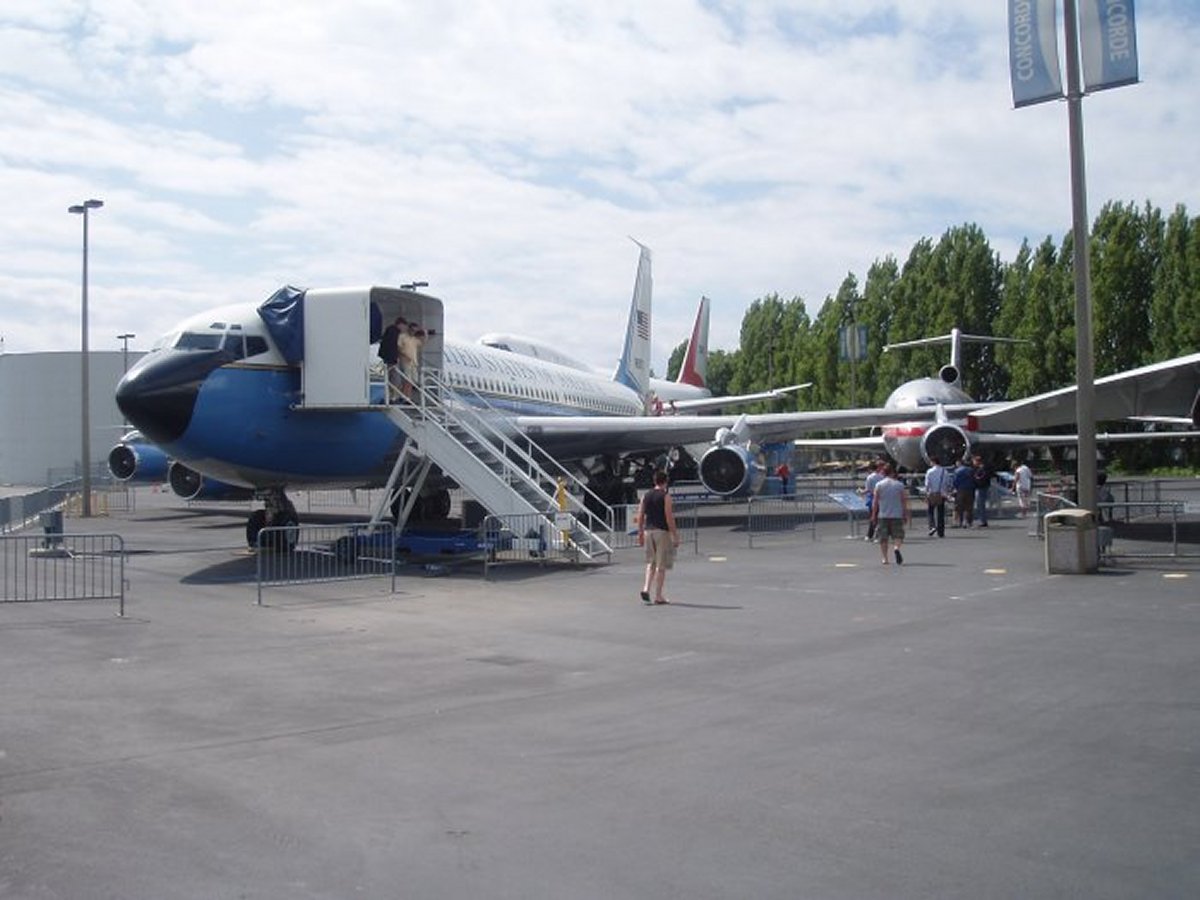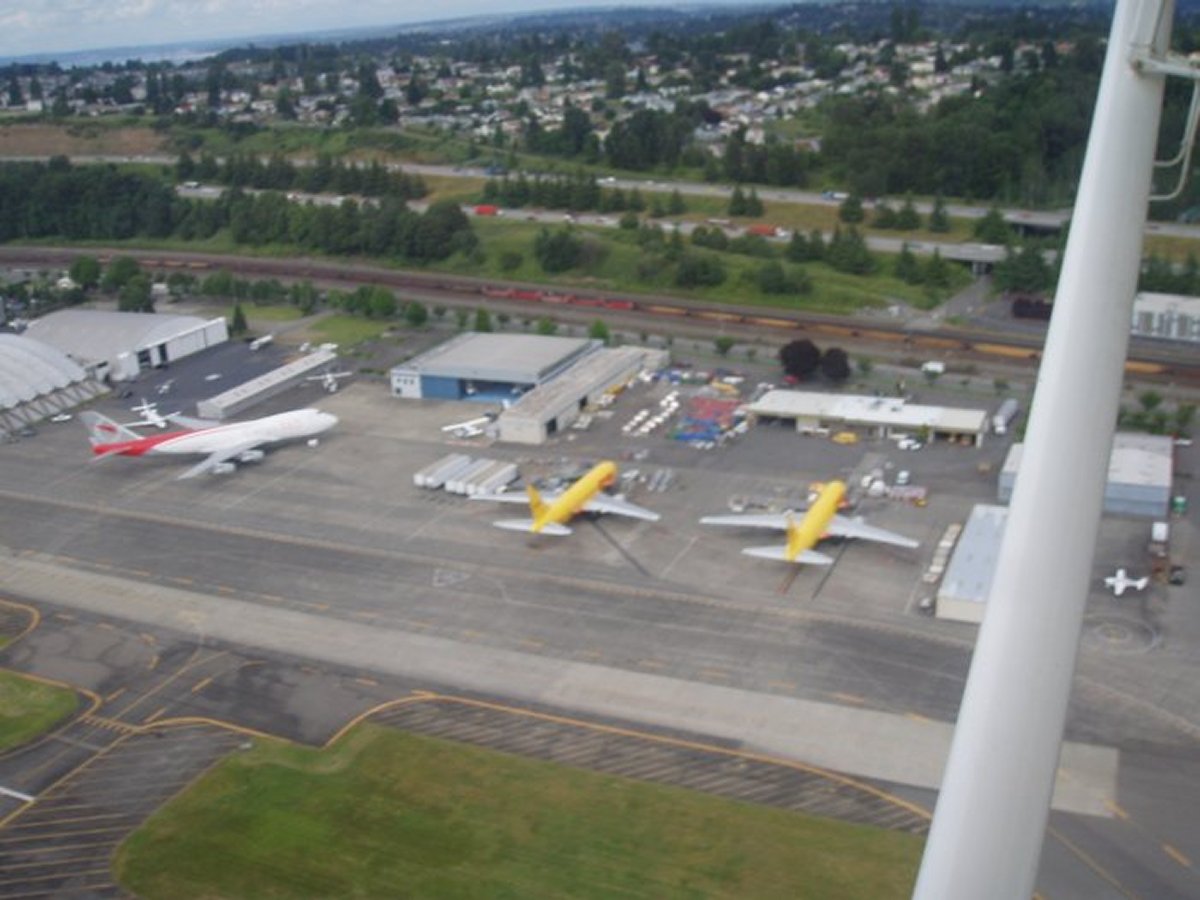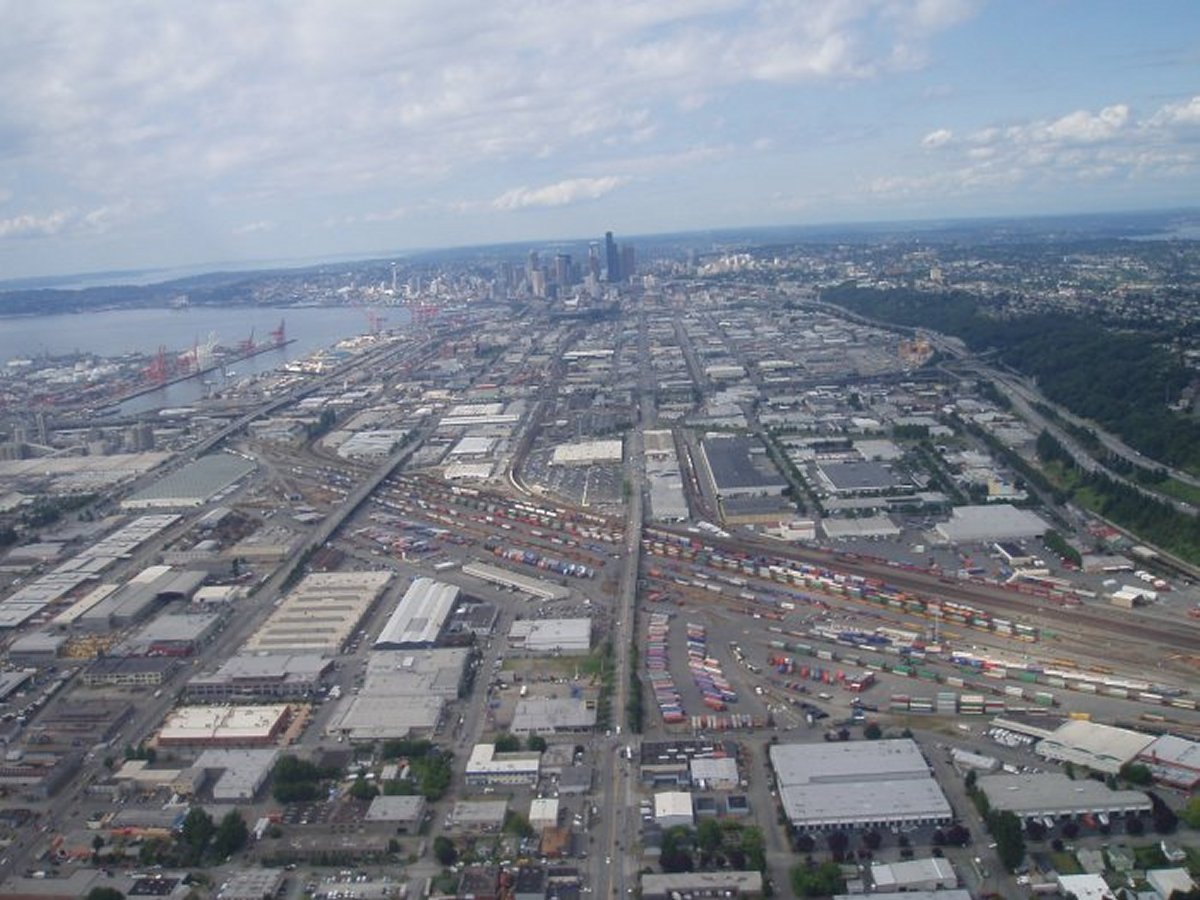June 19-20, 2006 - Seattle Museum of Flight and the Boeing Aircraft Factory
Prior to the flight, per their webpage, I had called the Museum to get prior permission. (I knew this thanks to the note on AirNav.Com) The museum has it's own transient parking spaces right out front, but a Museum security guy has to come outside and let you through the gate. It was kind of cool to park right in front of the museum and then walk on in.
This photo was taken from the Museum restaurant, where we had a nice lunch. The food was good and reasonably priced.

The Museum of Flight has four main sections: a traditional aircraft museum section with glass walls and lots of lights, a section in the old "Red Barn" factory, a brand new World War I and World War II aircraft wing, and an outside section.
We went to the glass section first. This FW-190 Dora caught my eye.
























The next day Dave and I flew the Citabria across the sound again, this time to Paine Field (KPAE), to tour the big Boeing Factory. I hadn't been able to find out any information about flying to the tour center. We ended up just parking at the Regal Air FBO. The tour center was by itself, on the other side of this big, towered airport. Regal Air was incredibly helpful, calling the tour center to see if a shuttle service was available -- there wasn't -- and then having an employee drive us over, and back. I felt bad that we didn't need any fuel, but we did tip the driver well -- he was a young man going to Emery Riddle University, aspiring to be an airline pilot -- and I'll write a good review for them in AirNav.Com.
Below is the entrance to the "Future of Flight Aviation Center" where you start the Boeing Factory Tour. First they show you a 20 minute movie. Seven minutes is a time-lapse film of a 777 jet being built from start to finish! Very cool.

The Factory building is the largest building in the world by volume: 89 acres I think. It's divided into five sections. In it, they build the 747, 737, 777, and soon the 787 Dreamliner.
There wasn't much to the tour. We were taken to a balcony that overlooked two of the sections: one that they were building 777s in and one that was unused, but will be used to build the 787. That was about it; we just looked out the balcony and talked with the tour guide. Then we were bused back to the center. They had some interesting stuff at the Center about the 787 but mostly it seemed to be a promotional thing for Boeing. The 787 fuselage is made from composites instead of the traditional aluminum, so because it is lighter, it has better performance and costs less. Also, if you believe what they say, the seats will be wider and spaced further apart. Every passenger will have a their own, bigger window. It seems as if they realize people are sick and tired of the "cattle car" jets and are getting away from that. I sincerely hope so.
Overall though, the "tour" was a little disappointing to me, perhaps because the Museum of Flight was so exceptional the day before.


The huge Factory building from the air. The blue mural -- stretching the length of the entire building -- is relatively new and cost over a million dollars.
Dave and I flew back to Whidbey, then went on a driving tour of the island, which is very scenic. We stopped and had lunch at this little seaport town, overlooking the sound. Then we cruised through Whidbey Island Naval Air Station which hosts all the venerable P-3 Orions on the west coast, plus the EA-6B Prowlers. It was nice to see a very active Naval Air Station.

Dave and I flew back to Whidbey, then went on a driving tour of the island, which is very scenic. We stopped and had lunch at this little seaport town, overlooking the sound. Then we cruised through Whidbey Island Naval Air Station which hosts all the venerable P-3 Orions on the west coast, plus the EA-6B Prowlers. It was nice to see a very active Naval Air Station. VP-46 -- the squadron my Dad commanded -- is based here.
